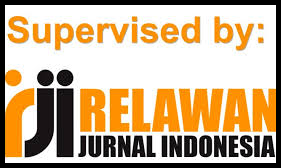ANALYSIS OF INDONESIAN CINNAMON EXPORT COMPETITIVENESS IN THE INTERNATIONAL MARKET
DOI:
https://doi.org/10.22437/jalow.v8i1.46094Keywords:
export, competitiveness, international market, XCi, RCTAAbstract
This study aims to describe the development of cinnamon and analyze the competitiveness of Indonesian cinnamon exports in the international market. The method used is the Revealed Comparative Trade Advantage (RCTA) to analyze competitiveness in terms of comparative advantage, and the Export Competitiveness Index (XCi) to measure competitiveness in terms of competitive advantage to assess Indonesia's relative competitiveness compared to competing countries such as Sri Lanka, China, Vietnam, and Saudi Arabia. The data used is time series data from 2000 - 2022 from the Central Statistics Agency (BPS), the Food and Agriculture Organization (FAO), and trade reports from the World Trade Organization (WTO). The results of the analysis show that in terms of comparative advantage, Sri Lanka's RCTA value has the highest RCTA value (867.535), followed by Indonesia (21.815), Vietnam (18.663), China (1.507), and Saudi Arabia (-1.925). In terms of competitive advantage, the highest XCi value is held by Saudi Arabia (1.729), followed by Vietnam (1.096), China (1.024), Indonesia (1.008), and Sri Lanka (0.981). This finding shows that although Indonesia has a strong comparative advantage, its competitive advantage tends to be low. To increase competitiveness, a comprehensive strategy is needed to increase production efficiency, invest in post-harvest technology, and strengthen more proactive export policies.
Downloads
References
Abdullah, Piter. 2002. Regional Competitiveness: Concept and Measurement in Indonesia. BPFE, Yogyakarta.
Ahdika, M., Nainggolan, S., Fitri, Y. 2016. Study of the Contribution of Rubber Plantations to the Economy in Merangin Regency. Downloaded fromhttps://doi.org/10.22437/jiseb.v19i1.4955
Asbiliyah, Alamsyah, Z., Nainggolan, S. 2014. Analysis of the Integration of the Areca Nut Market in West Tanjung Jabung Regency. Downloaded fromhttps://doi.org/10.22437/jiseb.v17i2.2802
Amir, M. 2000. Export Specialization and Competitiveness of the Malaysian Manufacturing: Trends, Challenges and Prospects. Conference on International Trade Education and Research, Melbourne.
Amir, M. 2000. Trade Liberalization and Malaysian Export Competitiveness: Prospects, Problems and Policy Implications
Angelina Siregar, F. Edison, Saputra A. 2020. Analysis of Factors Affecting the Volume of Jambi Cinnamon Exports to the International Market. Downloaded fromhttps://repository.unja.ac.id/11220/1/JURNAl.pdf
Asmara, Rosihan and Artdiyasa, N. 2008. Analysis of the Level of Competitiveness of Indonesian Plantation Commodity Exports. Agricultural Socio-Economics Journal, Malang. 8(2), p. 104. Downloaded fromhttps://agrise.ub.ac.id/index.php/agrise/article/view/2(Accessed: 20 January 2024).
Trade Assessment and Development Agency. 2017. Potential of Indonesian Spice Exports. Available atwww.bppp.kemendag.go.id. Retrieved December 18, 2024
Ball, Donald A and Wendell H. McCulloch. 2000. International Business 7th Edition. Salemba Empat, Jakarta.
Boediono. 2012. Theory of Economic Growth. BPFE, Yogyakarta.
Christiani, E., Mara, A., Nainggolan, S. 2013. The Role of Oil Palm Plantations in Regional Economic Development in Muaro Jambi Regency. Downloaded fromhttps://doi.org/10.22437/jiseb.v16i2.2782.
Deliarnov. 1995. Introduction to Macroeconomics. University of Indonesia, Jakarta.
Directorate General of Plantations. 2014. The Sweet One from Kerinci Who Became a World Idol.http://ditjenbun.pertania.go.id. Accessed January 20, 2024.
Djafar, Djainab. 2013. Analysis of Market Share of Indonesian Palm Oil, Rubber, Cocoa and Coffee Commodities in the International Market. Thesis, Brawijaya University, Malang.
Farina, Fenin. and Husaini, Achmad. 2017. The Influence of the Impact of Export and Import Level Development on the Exchange Rate of ASEAN Countries Per US Dollar (Study on the International Trade Center for the Period 2013-2015). Journal of Business Administration S1 Brawijaya University 50(6): 44-50.
Fatmawati, RY 2015. Analysis of the Influence of International Trade and Foreign Debt on Indonesia's Gross Domestic Product (Period 1990 – 2010). JESP 7(1): 55-62.
FoodAgricultural Organization Statistics(FAO). 2023. Statistical Database of Trade. Available athttps://www.fao.org/statistics/en/. Accessed January 20, 2024.
Jason Morris and An Van Bay. 2002. An Overview of the NTFP Sub-Sector in Vietnam. Forest Science Institute of Vietnam. Non-timber Forest products Research Center
Ministry of Industry. 2012. Indonesia is a major exporter of cinnamon. Available athttps://www.kemenperin.go.id/artikel/1992/Indonesia-Eksportir-Utama-Kayu-Manis.
Lestari S., Winarno B. 2023. Understanding indigenous knowledge in sustainable management of NTFPs agroforestry in Indonesia: a case of Southern Sumatra. IOP Conf. Ser.: Earth Environ. Sci. 1133 012063. Downloaded fromhttps://iopscience.iop.org/article/10.1088/1755-1315/1133/1/012063.
Malik, A., Murdy, SA, & Nainggolan, S. 2015. Analysis of the integration of the Singapore crumb rubber market and the rubber auction market in Batanghari Regency, Jambi Province.
Mubarokah, N., & Nurhayati, L. 2020. Analysis of Indonesian Cinnamon Export Development. Journal of International Trade, 11(1), 45-60.
Murni, A. 2009. Macroeconomics. PT Refika Aditama, Bandung.
Nurdani, AS and Puspitasari, DM 2023. The effect of exports and imports on economic growth in Indonesia. Scientific Journal of Accounting and Finance 5(8). Downloaded fromhttps://journal.ikopin.ac.id/index.php/fairvalue.
Nur M., Agustin H., Nur, NM 2023. The Effect of Export and Import on Economic Growth in Indonesia. Management Studies and Entrepreneurship Journal. Downloaded fromhttp://journal.yrpipku.com/index.php/msej.
Porter, M.E. 1998. The Competitive Advantage of Nations. Free Press, New York.
Rafif KA, Solikhah TI, Hanisia HR, Atsa C., Arengga Y. 2022. Beneficial Impacts and Phytocomponents of Cinnamomum in Indonesia: A Review. Research Journal of Biotechnology 17(10): 114-123.
Rambe, KR and Malau, LRE 2023. Competitiveness level and factors influencing trade flows of Indonesian cinnamon. AGROMIX 14(1): 28-38. Downloaded from https://doi.org/10.35891/agx.v14i1.3107.
Rochdiani, D. and Wulandari, E. 2023. Competitiveness Analysis and Factors Affecting Indonesian Cinnamon Exports. Economies 11(2). Downloaded fromhttps://doi.org/10.3390/economies11020055
Rudriger, D. 2006. Macroeconomics. Eighth Edition. Media Global Education, Jakarta.
Salvatore, D. 1997. International Economics. Fifth Edition. Erlangga, Jakarta
Sidabutar, F. 2022. Analysis of the Role of Oil Palm Plantations on Economic Growth in Batanghari Regency.https://repository.unja.ac.id/32813/
Sukirno, Sadono. 2012. Macroeconomics: An Introductory Theory. Raja Grafindo Perkasa, Jakarta.
Syahputra, R. 2017. Analysis of Factors Affecting Economic Growth in Indonesia. JOURNAL OF SAMUDRA EKONOMIKA 1( 2): 183-191.
Tambunan, T. 2004. Globalization and International Trade. PT. Pustaka LP3S, Jakarta.
Yossinomita, Haryadi, Nainggolan, S. Zulfanetti. 2024. ECONOMIC GROWTH AND TAXATION

Downloads
Published
How to Cite
Issue
Section
License
Copyright (c) 2025 Ardhiyan Saputra; Agustynus Pratama; Saidin Nainggolan

This work is licensed under a Creative Commons Attribution 4.0 International License.











